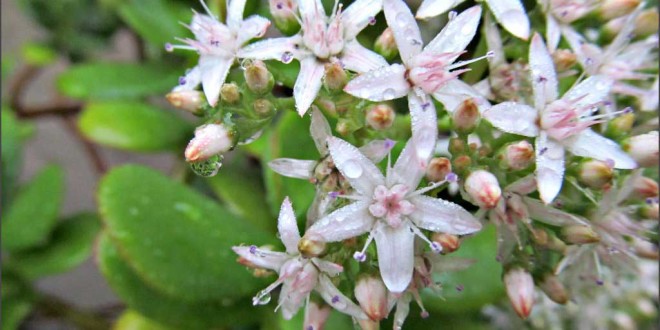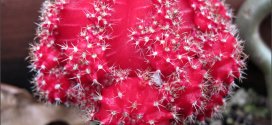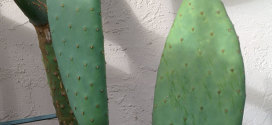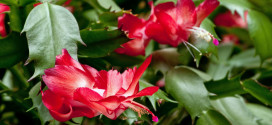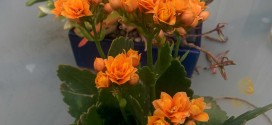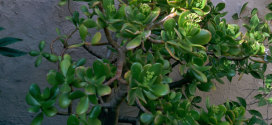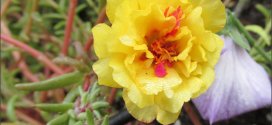During winter in Sunnyvale, the Jade plant is covered with white flowers. It’s is frequently visited by our resident hummingbird. Jade Plant (aka Jade Tree, Money Tree) is a great landscape plant for the Sunnyvale garden. It is a succulent that needs little watering.
Jade plant is toxic to pets and can cause vomiting and a slow heart rate. In 40 years, our cats have never demostrated any interest in eating jade plant.
Details
Genus: Crassula (KRASS-oo-la) (Info)
Species: ovata (oh-VAY-tuh) (Info)
Synonym:Crassula argentea
Synonym:Crassula portulacea
Category:
Tropicals and Tender Perennials
Cactus and Succulents
Height:
4-6 ft. (1.2-1.8 m)
Spacing:
24-36 in. (60-90 cm)
Hardiness:
USDA Zone 9a: to -6.6 °C (20 °F)
USDA Zone 9b: to -3.8 °C (25 °F)
USDA Zone 10a: to -1.1 °C (30 °F)
USDA Zone 10b: to 1.7 °C (35 °F)
USDA Zone 11: above 4.5 °C (40 °F)
Sun Exposure:
Full Sun
Danger:
N/A
Bloom Color:
Pink
Purple
White/Near White
Bloom Time:
Mid Winter
Foliage:
Grown for foliage
Other details:
This plant is suitable for growing indoors
Drought-tolerant; suitable for xeriscaping
Average Water Needs; Water regularly; do not overwater
Soil pH requirements:
6.1 to 6.5 (mildly acidic)
Patent Information:
Non-patented
Propagation Methods:
Allow cut surface to callous over before planting
Seed Collecting:
Unknown – Tell us
Read more: http://davesgarden.com/guides/pf/go/9/#ixzz3JFczkr7R
Cultivation
Propagation
Like many succulents, jade plants can be propagated from just the swollen leaves which grow in pairs on the stems. While propagation methods may vary, most will follow similar steps. Typically, the wounds on the leaves are left to dry and callous over. Then the leaves are placed in or on soil. Roots begin to grow on severed leaves about 4 weeks after being removed from the stem. Environmental factors such as temperature and humidity affect the speed at which the roots and new plant develop. Foliage usually appears soon after new roots have formed.
